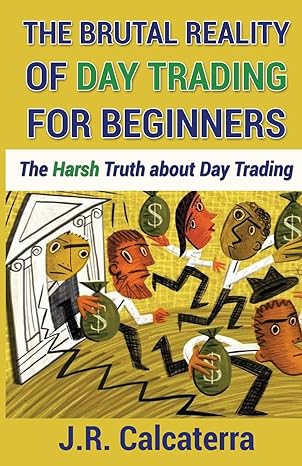Question
23. You put half of your money in a stock portfolio that has an expected return of 14% and a standard deviation of 30%. You
23. You put half of your money in a stock portfolio that has an expected return of 14% and a standard deviation of 30%. You put the rest of your money in a risky bond portfolio that has an expected return of 6% and a standard deviation of 12%. The stock and bond portfolios have a correlation of .55. The standard deviation of the resulting portfolio will be ________________. A. more than 18% but less than 24% B. equal to 18% C. more than 12% but less than 18% D. equal to 12%
10. Asset A has an expected return of 20% and a standard deviation of 20%. The risk-free rate is 10%. What is the reward-to-variability ratio? A. .40 B. .50
C. .75
D. .80
70. Three stocks have share prices of $24, $75, and $30 with total market values of $400 million, $350 million, and $150 million, respectively. If you were to construct a price-weighted index of the three stocks, what would be the index value? A. 300
B. 39 C. 43 D. 30
52. Assume you purchased 500 shares of XYZ common stock on margin at $30 per share from your broker. If the initial margin is 60%, the amount you borrowed from the broker is _________. A. $20,000 B. $12,000
C. $8,000 D. $6,000
22. Assume that you have just purchased some shares in an investment company reporting $500 million in assets, $100 million in liabilities, and 50 million shares outstanding. What is the net asset value (NAV) of these shares? A. $12
B. $9 C. $10 D. $8
13. The arithmetic average of -11%, 25%, and 30% is ________. A. 14.67%
B. 8% C. 11.22% D. 13%
14. The geometric average of -12%, 17%, and 25% is _________. A. 8.77%
B. 8.15% C. 9.7% D. 18.88%
16. An investment earns 10% the first year, earns 14% the second year, and loses 12% the third year. The total compound return over the 3 years was ______. A. 41.68% B. 11.32%
C. 10.35% D. 13%
18. Suppose you pay $9,500 for a $10,000 par Treasury bill maturing in 3 months. What is the holding-period return for this investment? A. 3.01% B. 3.09%
C. 5.26% D. 16.71%
27. Your investment has a 40% chance of earning a 40% rate of return, a 30% chance of earning a 10% rate of return, and a 30% chance of losing 6%. What is your expected return on this investment? A. 12.8% B. 13.2%
C. 17.2% D. 9.2%
28. Your investment has a 50% chance of earning a 18% rate of return, a 40% chance of earning a 10% rate of return, and a 10% chance of losing 3%. What is the standard deviation of this investment? A. 6.45% B. 6.57%
C. 9.29% D. 8.43%
41. An investor can design a risky portfolio based on two stocks, A and B. The standard deviation of return on stock A is 20%, while the standard deviation on stock B is 15%. The correlation coefficient between the returns on A and B is 10%. The expected return on the minimum-variance portfolio is approximately _________.
A. 10% B. 13.6% C. 15% D. 19.41%
30. The standard deviation of return on investment A is .10, while the standard deviation of return on investment B is .05. If the covariance of returns on A and B is .0018, the correlation coefficient between the returns on A and B is _________. A. .12 B. .36 C. .60 D. .77
Step by Step Solution
There are 3 Steps involved in it
Step: 1

Get Instant Access to Expert-Tailored Solutions
See step-by-step solutions with expert insights and AI powered tools for academic success
Step: 2

Step: 3

Ace Your Homework with AI
Get the answers you need in no time with our AI-driven, step-by-step assistance
Get Started


